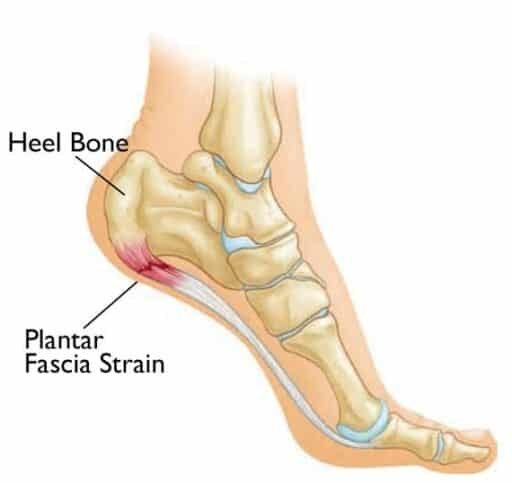Some great info for girls – at least check out the conclusions…
New research examines the potential impact of strength training on the development of type 2 diabetes and cardiovascular disease.
Title: Strength Training and the Risk of Type 2 Diabetes and Cardiovascular Disease.
Authors: Dr’s Shiroma and colleagues. (National Institutes of Health, National Institute on Aging, Maryland, USA)
Source: Medicine & Science in Sports & Exercise. 49(1): 40-46 (2017).
 Introduction: One thing that I like about seeing patients with a wide variety of chronic diseases or disorders is that it never gets boring. You may see 1,000 individuals with (for example) osteoporosis each year, yet every one of them is different. Students always ask ‘do you memorise the exercise guidelines for each of the disorders or do you have them stored somewhere?’ This is quite a reasonable question, and the answer is yes and yes. You can’t help but commit the guidelines to memory, but as they are ‘living guidelines’ they are continually updated, and it’s no small task to keep abreast of them. So, despite my brilliant memory… I still keep an electronic copy of the most recent exercise prescription guidelines in my DropBox for easy access, each in a folder specific to the disease/disorder. Hell of a good system (in my humble opinion).
Introduction: One thing that I like about seeing patients with a wide variety of chronic diseases or disorders is that it never gets boring. You may see 1,000 individuals with (for example) osteoporosis each year, yet every one of them is different. Students always ask ‘do you memorise the exercise guidelines for each of the disorders or do you have them stored somewhere?’ This is quite a reasonable question, and the answer is yes and yes. You can’t help but commit the guidelines to memory, but as they are ‘living guidelines’ they are continually updated, and it’s no small task to keep abreast of them. So, despite my brilliant memory… I still keep an electronic copy of the most recent exercise prescription guidelines in my DropBox for easy access, each in a folder specific to the disease/disorder. Hell of a good system (in my humble opinion).
Another common question from students is ‘do you prescribe the same exercise prescription for every patient with the same disease?’ This time the answer is yes – and no. The guidelines provide the base of the exercise prescription, however for best practice I need to take into account any limitations each patient may have. For example, the majority of patients I see with osteoporosis are generally older (50 years and over) and female. But regardless of gender, an osteoporosis patient’s exercise prescription will focus upon weight bearing exercises, falls prevention exercise/training and enquiry into their vitamin D and calcium intake (the latter to ensure they are meeting the International Osteoporosis Foundation guidelines). Yes, I do this for every patient. When dealing with the mature-aged patient, you also have to appreciate the presence of co-morbidities (the presence of additional diseases or disorders).
But what ‘protection’ is afforded from resistance training for other co-morbidities, such as cardiovascular disease and type 2 diabetes mellitus? This is the question Dr Shiroma and his colleagues investigated using data from the Women’s Health Study, a large-scale study from Harvard Medical School which used annual questionnaires to investigate women’s health in more than 35,000 women annually from 1992 to 2004 and then afterwards in an ongoing observational study. The purpose of the study was to advance the knowledge about prevention of cardiovascular disease, cancer and other diseases in women. For this study, the researchers were interested in the association between strength training and the incidence of type 2 diabetes and cardiovascular disease risk.
Methods: Dr Shiroma and his colleagues assessed the health of approximately 36,000 healthy women (average age 62) who completed an initial questionnaire in 2000 and then one per year until the final questionnaire in 2014. For this particular study, they were interested to see how many active women developed type 2 diabetes and/or cardiovascular disease. They defined cardiovascular disease as cases of either myocardial infarction, stroke, having undergone coronary artery bypass surgery, angioplasty or death (attributed to cardiovascular disease). The researchers investigated the physical activity of these women, enquiring into their walking pace, flights of stairs climbed daily, leisure activities (walking, hiking, jogging, cycling, aerobics, swimming and weight lifting/strength training). Leisure activities were quantified by time per week. For analysis purposes, the researchers categorised the leisure activity into: no participation; 1 to < 20mins/week; 20 to < 60mins/week; 60 to < 120mins/week; and > 120mins/week.
Results: A total of 35,754 healthy women (average age 62, average BMI 27kg/m2) volunteered to participate in this study of which almost 7,000 (18.9%) participated in strength training. Women who reported participation in strength training tended to have a lower BMI, healthier eating patterns and be less likely to smoke.
Over the 14-year period (2000 to 2014), 2,120 of the women developed type 2 diabetes and 1,742 developed cardiovascular disease. However, the women who participated in any strength training had a 30 per cent reduction in developing type 2 diabetes and a 17 per cent reduction in developing cardiovascular disease (compared to women who completed no strength training).
Women who participated in both strength training and > 120 minutes of aerobic exercise demonstrated a 65 per cent risk reduction for type 2 diabetes; if they only participated in aerobic exercise the risk reduction was 48 per cent.
If the women participated in both strength training and > 120 minutes of aerobic exercise they had a 39 per cent reduction in developing cardiovascular disease. If they only participated in the aerobic exercise, this resulted in a 21 per cent reduction of risk.
Conclusions: This was the first longitudinal study to examine the association of strength training and development of type 2 diabetes and cardiovascular disease. Women who participated in higher amounts of both strength training and aerobic exercise had a greater reduction in type 2 diabetes than those who only strength trained or completed aerobic exercise. These findings provide evidence that the benefits of strength training and aerobic training are independent.
Pros: This is a great study which demonstrates the benefits of strength training in reducing the risk of developing type 2 diabetes or cardiovascular disease in women. These findings also illustrate the further effectiveness of combined strength and aerobic exercise. The Women’s Health Study is a great health initiative of the Harvard Medical School, the researchers should be congratulated for their research efforts.
Cons: The questionnaire was quite limited with regard to the information it collected on strength training, as the researchers only enquired into the ‘time’. It would be quite advantageous if they could establish the dose (sets x reps x intensity) to determine where threshold(s) may exist with regard to reduced risk. Perhaps this will be one of their follow-up studies.
Associate Professor Mike Climstein, PhD FASMF FACSM FAAESS is one of Australia’s leading Accredited Exercise Physiologists and researchers. He is director of chronic disease rehabilitation at Vale Medical Practice. mike.climstein@sydney.edu.au
Joe Walsh, MSc is a sport and exercise scientist. As well as working for Charles Darwin and Bond Universities, he is a director of Fitness Clinic in Five Dock, Sydney. fitnessclinic.com.au


